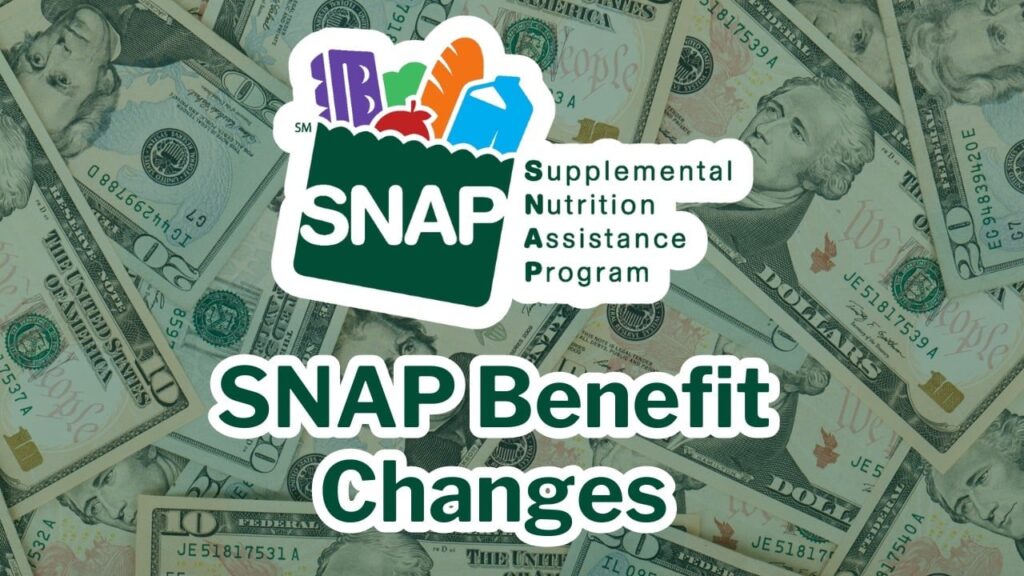The Supplemental Nutrition Assistance Program (SNAP) could face major changes in 2024 with the introduction of new legislation called the Rural Prosperity and Food Security Act of 2024.
The bill, introduced by Senate Agriculture Committee Chairwoman Debbie Stabenow, aims to strengthen SNAP’s structure while also strengthening environmental and climate protections, but contrasting drafts from Republican senators suggest possible cuts to program funding and could lead to major changes to benefit amounts and eligibility criteria.
Changes to SNAP in 2024 could alter how the program operates and who receives assistance. While the goal is to strengthen food security and support sustainable practices, the opposing draft presents a complex scenario where the outcome will depend heavily on the legislative process. Program beneficiaries and stakeholders in the food security sector should closely monitor these developments to prepare for upcoming changes.
Projected changes to SNAP benefits in 2024

Increasing focus on sustainable agriculture
The new law promotes equitable food and agriculture systems by incorporating conservation and climate considerations into food security strategies, emphasizing stronger public-private partnerships in agricultural research and supporting local farming communities to strengthen access to supply chains.
Financial Adjustments
The bill proposes to make crop insurance more affordable, increase farmers’ access to land and credit availability, and indirectly support food security by stabilizing food production.
Changes to SNAP Benefit Calculations
Military basic housing benefits will no longer be counted as income in SNAP calculations. Restrictions will be relaxed for college students and those with foster care experience, allowing more young people to qualify for benefits. Income from employment and training programs will be excluded from the calculation of SNAP eligibility.
Benefit inclusion and restoration
Allows people convicted of drug offenses to apply for SNAP benefits 30 days before their release. Includes Puerto Rico in the SNAP benefits program and expands the reach of the program. Increases funding for SNAP education to help recipients make informed food choices.
Impact of potential funding cuts
If the Republican alternative is approved, SNAP could face $30 billion in cuts over the next decade. The cuts would freeze adjustments for food inflation and could see the average household lose roughly $7 in benefits each month. Given that more than 41 million Americans rely on SNAP, these changes could have serious implications on food insecurity nationwide.
Additional SNAP updates for 2024
USDA adjusts SNAP benefits annually based on the cost of living, and for the fiscal year October 1, 2023 through September 30, 2024, eligibility requirements and benefit allocations have been updated.
Raising the eligibility age
The age limit for “able-bodied adults with no dependents” (ABAWD) will be increased and the work requirement will be extended to individuals up to the age of 54 by October 2024.
Income Eligibility
The monthly gross income limit is set at 130% of the federal poverty level, with the specific amount adjusted based on household size and geographic location.
Maximum Allocation
Maximum benefit allocations are being adjusted, and specific amounts vary by state and household size.
Understanding SNAP Benefit Amounts and Eligibility Criteria
SNAP benefits and eligibility criteria are intended to help people in need by providing financial assistance with purchasing food. These aspects are adjusted annually to reflect changes in the cost of living and economic circumstances.
Eligibility Criteria
To be eligible for SNAP benefits, households must meet several income and asset standards, including:
Income Limits: Gross monthly income: Must be at or below 130% of the Federal Poverty Level (FPL). This amount varies depending on the size of your household and the state in which you live. Net monthly income: Must be at or below 100% of the FPL after deductions. Asset Limits: Households without elderly or disabled members must have assets (such as cash or money in a bank account) of $2,750 or less. Households with elderly or disabled members must have assets of $4,250 or less. Work Requirement: Able-bodied adults with no dependents (ABAWDs) must meet work requirements, including working at least 80 hours a month or participating in a work program. Beginning in October 2024, this requirement includes individuals up to age 54. Other Criteria: Applicants must be U.S. citizens or meet certain non-citizen eligibility criteria. Certain individuals are not eligible, such as strikers, most college students, and some non-citizens. SNAP Benefit Amount
The total amount of SNAP benefits a household receives (allocation) is based primarily on the household’s size, income, and deductibles, which include income, dependent care expenses, medical expenses (elderly or disabled), and excess housing costs.
Monthly Allocation Calculation
Benefits are calculated by estimating how much income is left over for food after meeting basic needs. Households are expected to spend 30% of their net income on food. SNAP allotments are the difference between this 30% and the maximum benefit based on household size.
Maximum and Minimum Allocations
The maximum benefit for 2024 will vary by household size and location due to differences in the cost of living. For example, a family of four in the lower 48 states and Washington, D.C., can expect to receive a maximum benefit of $973 per month. The minimum benefit for small households will remain at $23.
Cost of Living Adjustment (COLA)
The allotment is adjusted annually to reflect changes in the cost of living. This adjustment ensures that SNAP benefits keep up with food price inflation.
Amount calculation example
For a family of four with a monthly net income of $1,200:
The household’s expected contribution to food is 30 percent of $1,200, or $360. If the maximum allotment for a family of four is $973, then the SNAP benefit would be $973 – $360 = $613 per month.
SNAP’s design addresses food insecurity by adjusting benefits based on economic factors and household need. Understanding these details helps ensure eligible individuals and families get the support they need effectively. These criteria and benefit calculations allow the program to target assistance to the most vulnerable while adapting to changes in economic conditions and the cost of living.


